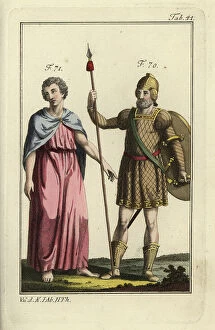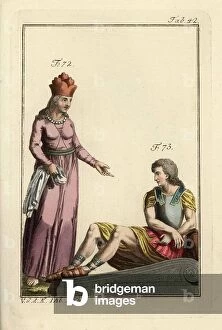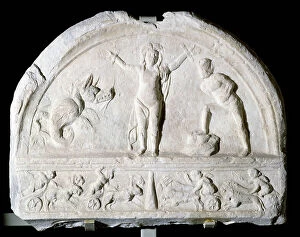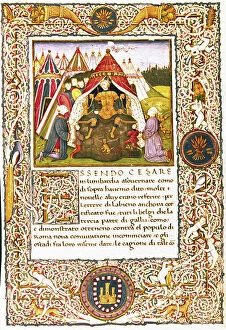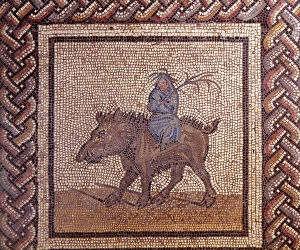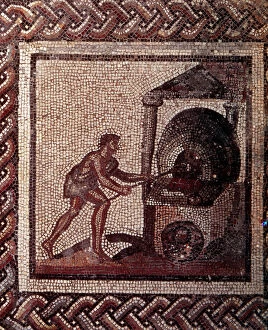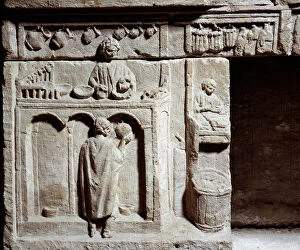Gaule Romaine Collection
Step back in time and immerse yourself in the captivating world of Gallo Roman art
For sale as Licensed Images
Choose your image, Select your licence and Download the media
Step back in time and immerse yourself in the captivating world of Gallo Roman art. This collection of mosaic pavings, housed at the National Museum of Archeology in Saint Germain en Laye, offers a glimpse into the daily life and traditions of ancient Gaul. One striking piece is a rustic calendar mosaic that dates back to the end of the 2nd century and beginning of the 3rd century after JC. It depicts various scenes that reflect the agricultural rhythms and festivities celebrated by these ancient people. In one section, we see a scene of treading grapes in a vat, symbolizing their wine-making practices. The vibrant colors bring this moment to life, capturing both the laborious process and joyous spirit surrounding winemaking during that era. Another part showcases an oil press, highlighting their expertise in extracting precious oils from olives or other fruits. This image serves as a reminder of their resourcefulness and reliance on natural resources for sustenance. The calendar also features scenes related to bread making, emphasizing its importance as a staple food item for Gauls. These depictions provide insight into their culinary customs and techniques passed down through generations. Additionally, there are representations depicting summer allegories with lions symbolizing strength and power. These images likely held significance within their cultural beliefs or mythologies. Sacrifice scenes dedicated to Ceres and Apollo reveal religious practices intertwined with agriculture. The Gauls believed in honoring deities associated with fertility for bountiful harvests each year. A celebration scene captures moments filled with merriment as people gather together to commemorate special occasions or festivals unique to Gallo Roman culture. Their love for community bonding shines through this artwork. Lastly, we witness reapers engaged in harvesting activities during what appears to be a festival dedicated solely to them—a testament to how vital agriculture was for sustaining communities during this period. These intricate mosaics transport us back centuries ago when life revolved around the land and its abundance.

